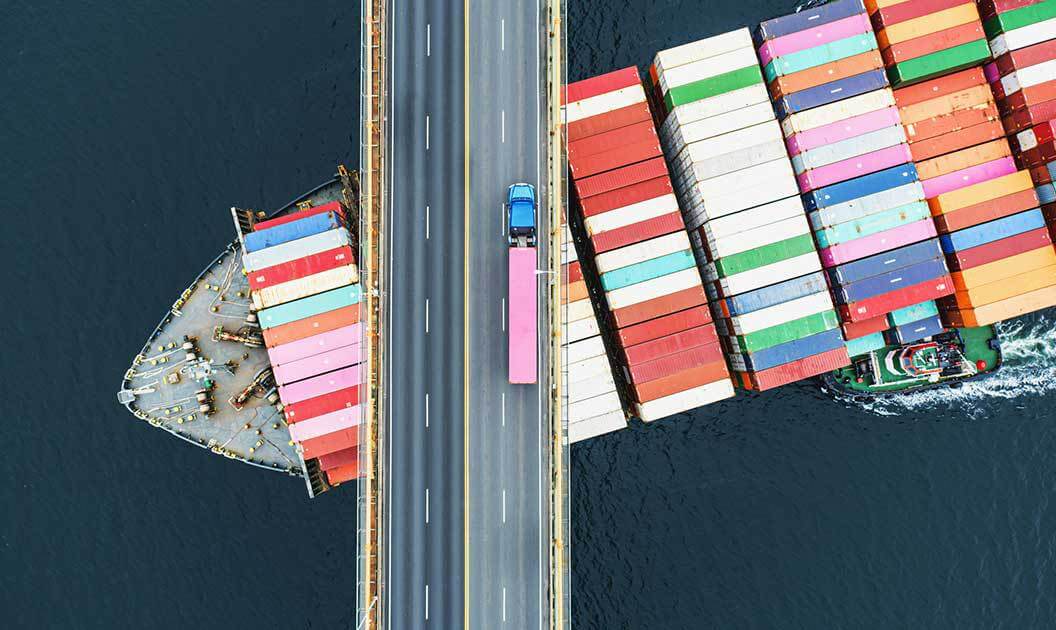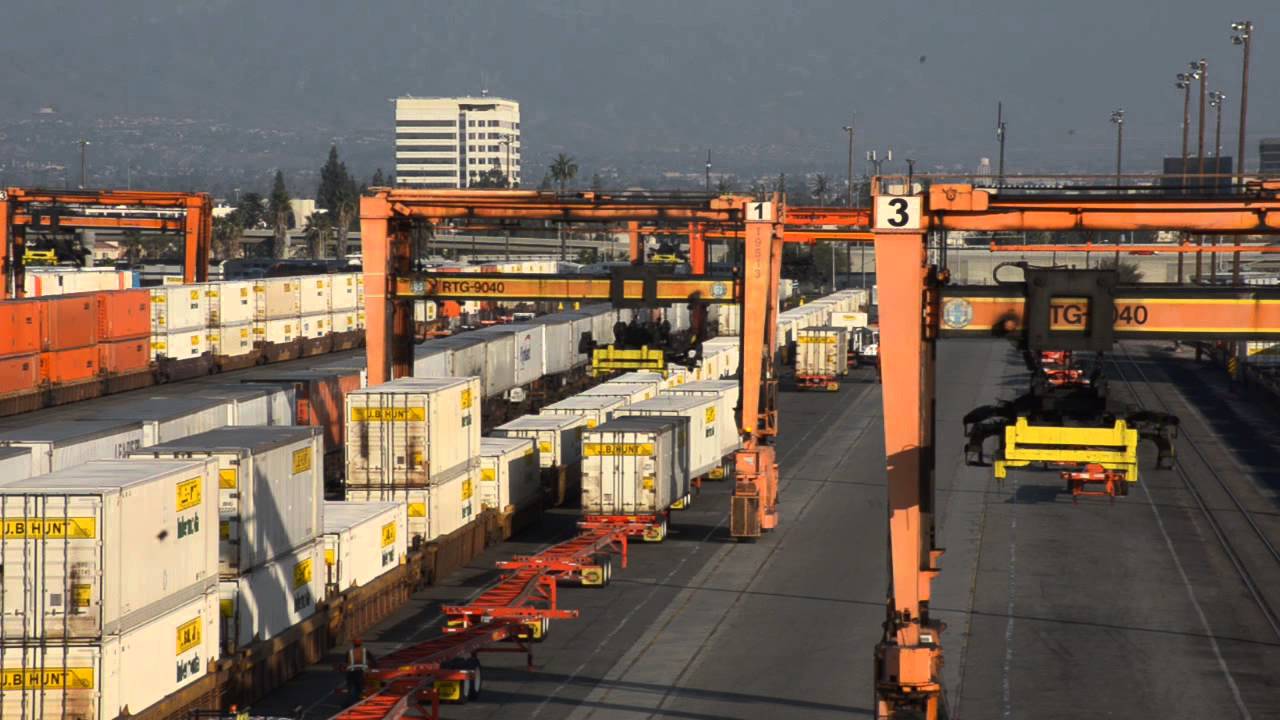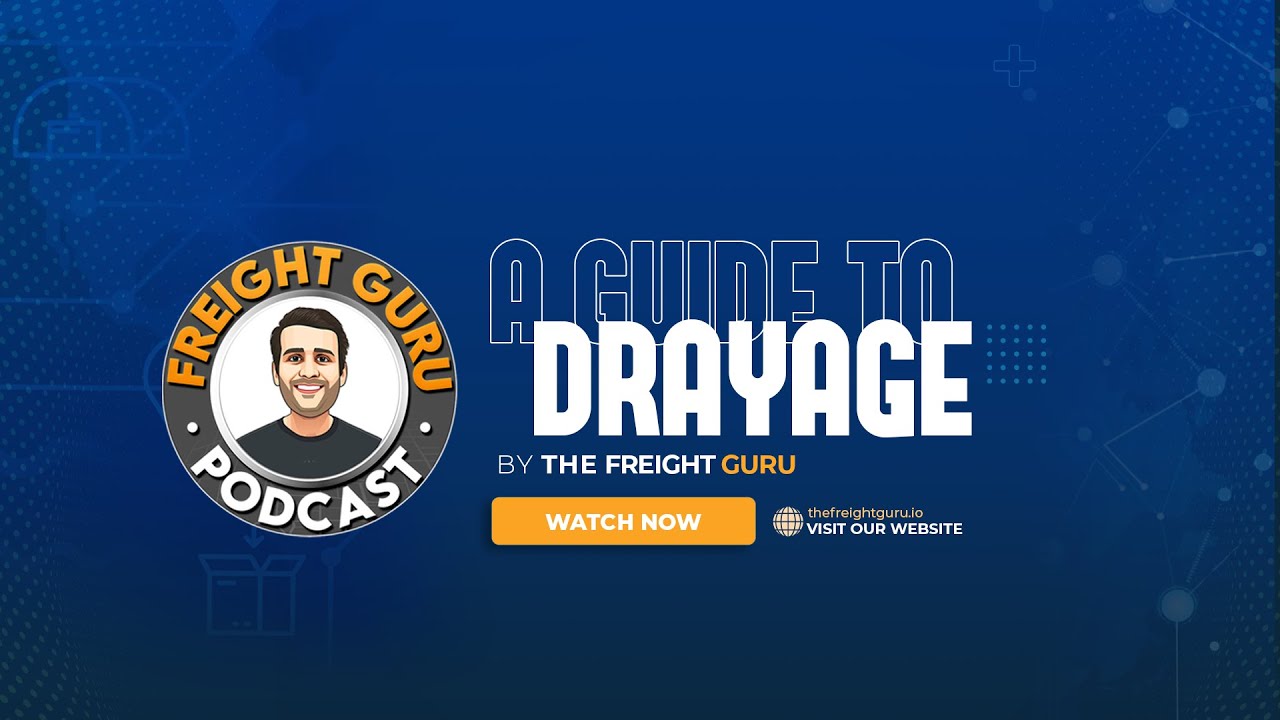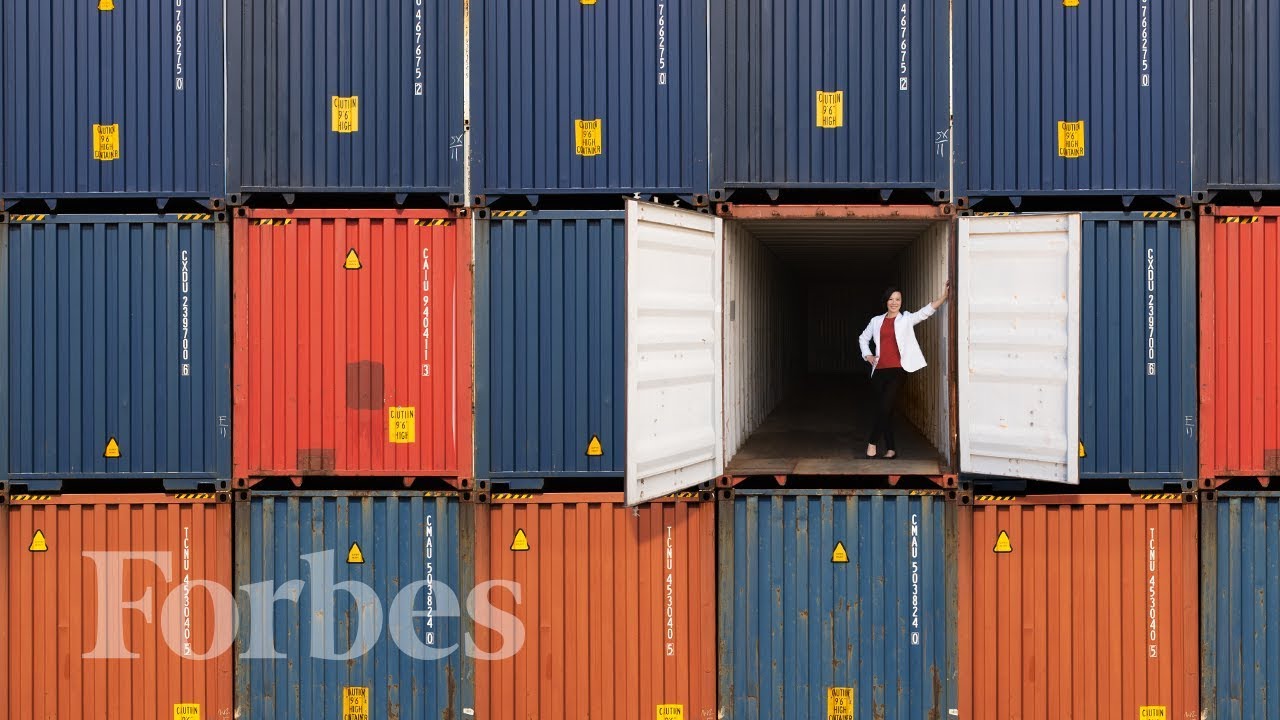When deciding between transload vs drayage, there are many factors that determine which works best for your shipping needs. Truthfully, both transloading and drayage services are essential in the modern era of logistics, especially with the current state of the international supply chain. Adapting and utilizing services that can get you one step ahead of the competition is critical.
Transloading and drayage serve different purposes but both facilitate the transport of goods. Transloading is a long-haul solution that utilizes multiple forms of transport to move goods throughout the supply chain. Drayage is a short-haul solution designed to quickly move goods in and out of ports of entry and distribution facilities.
Transloading vs drayage, which is crucial to your supply chain or business? Are there reasons these services are so popular and compelling? Find out answers to these questions and more in the article below.
What is Transloading?
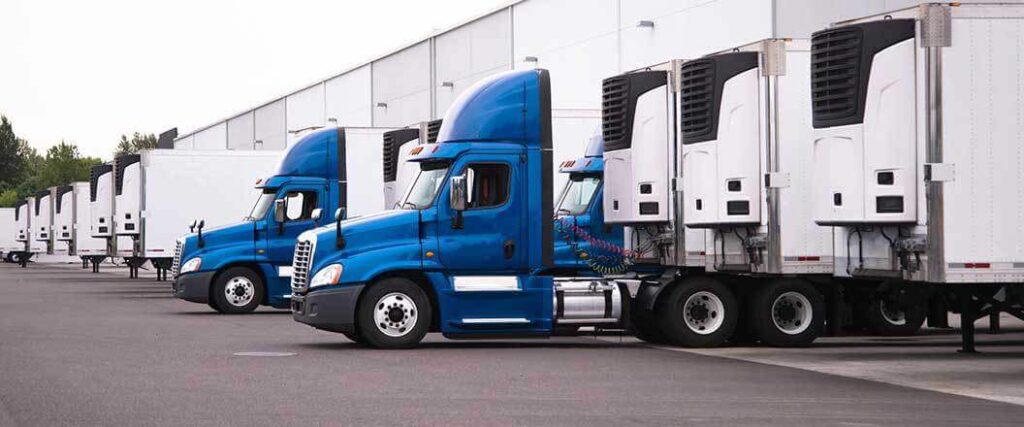
Transloading is a unique way of transporting goods, whether directly from a port, terminal, or facility. Transloading is a methodology for shipping where multiple forms of transport are involved in shipping freight or other forms of cargo. When shipping goods anywhere in the country, consideration, and planning must be taken into account to get the load successfully transported from its origin to its destination.
Transloading employs various modes of transport to successfully navigate terrain, timetables, and customer needs. These goods can be in the form of fully loaded freight containers, palletized freight, or heavy, oversized loads. These loads are shipped using a wide array of transport equipment options to ensure timely delivery at a reduced cost.
The video above shows freight containers that were previously loaded arriving at a transload rail yard. The containers are then loaded onto another form of transport known as a chassis trailer and transported.
Loading and unloading freight from their original containers into new ones and on different equipment requires rich logistical choreography. Transloading also requires great logistical skills conducive to your supply chain. Fortunately, there are industry professionals like Transload USA ready to help.
The Importance of Transloading
Transloading is critically important in terms of modern-day shipping. The daily challenges faced in supply chains, including disruptions at the ports, are numerous and ever-present. The flow of goods across the country depends on factors such as transport equipment availability, adaptability, speed, and experienced logistical operations.
That is why it is imperative to be as flexible as possible in terms of using whatever means necessary to transport your goods in the shortest amount of time, with minimal handling, and at the absolute best cost savings available.
The table below illustrates a direct comparison of a single truckload and that of a single rail car. Why is this information necessary, you might ask? The data is essential in showcasing how a single rail car can save money and haul more freight than a conventional single truckload.
Single Truckload Versus Single Rail Car
| Trailer Type | Tonnage Capacity Per Trailer | (TMPG) Ton Miles Per Gallon | Hours Allowed to Travel |
| Dry Van | 20 Tons | 140 TMPG | 11 Hours |
| Rail Car | 105 Tons | 500TMPG | 12 Hours |
Sources: up.com, railroads.dot.gov
Freight trains can be as long as two to three miles, which is incredible in terms of total cargo. The cargo carried, and the cost of transporting the full freight is considerably cheaper and more efficient than conventional Truckload. Another critical factor is the amount of freight a single train can haul by comparison to multiple individual truckloads.
Rail freight is just a piece of the puzzle; goods are either loaded onto rail cars once delivered by truckloads or unloaded off rail cars onto truckloads for final delivery. In other cases, both methods are deployed. However, not everyone has direct rail line access for loading and unloading. It is for this reason that truckloads are so important.
Transloading means less time where freight is sitting or stored, bulk loading and shipping, and individual transit from the point of origin to destination delivery. This service is all about efficiency, reducing bottlenecks, and increasing profitability.

Equipment Used in Transloading
Transloading deploys various modes of transport and equipment to successfully navigate terrain, timetables, and customer needs. Flexibility and adaptability is the hallmark of transloading for meeting modern-day shipping challenges.
Beyond the modes of transportation for various freight, transloading facilities require additional equipment to function at peak efficiency. These facilities handle all manner of goods from solids to liquids, explosive to hazardous materials, and large and small cargo.
Examples of goods handled in transloading are:
- Bulk: Unpackaged or loose cargo
- Palletized: Multiple-piece cargo
- Container: Freight loaded into a storage container
- Refined: Freight such as oil or grain
- Agricultural: Cultivated plants and livestock
- Chemical: Freight that is deemed chemical or hazardous liquid
Examples of equipment used in transload facilities are:
- Forklifts: Self-propelled short-range lifter and hauler
- Cranes: Machine that uses ropes and pulleys to raise and lower goods.
- Storage facilities: Storage area for storing and loading goods onto transports
- Rail ramps: A space where goods are loaded and unloaded from rail cars
- Bulk conveyors: Loading and unloading bulk goods for transloading
- Pipe grabs: Lifts for heavy-duty pipes to be loaded and unloaded
Examples of equipment used to transport cargo are:
- Truckload
- Chassis trailer
- Flatbed
- Oversized load trailer
- Dry van
- Vented dry van
- Refrigerated van
- Rail line
- Flat car
- Box car
- Refrigerated box car
- Coil car
- Tank car
- Gondola
- Autotrack car
- Centerbeam
- Covered hopper
- Open top hopper
- Well car
- Vessel
- Dry cargo
- Liquid Cargo
- Specialized cargo
- Barge
- Deck barge
- Hopper barge
- Inland barge
For example, unloading a freight container from a truck chassis, then loading it onto a rail car, and then unloading it from the rail car and back onto a truck chassis for delivery.
So what does all this information all mean? Transloading is carefully and precisely choreographed to maximize shipping to its best potential. In other words, the unloading and loading of freight from one transport type to another, one container to another, all in a resource-intensive way that maximizes transport operations.
What is Drayage?
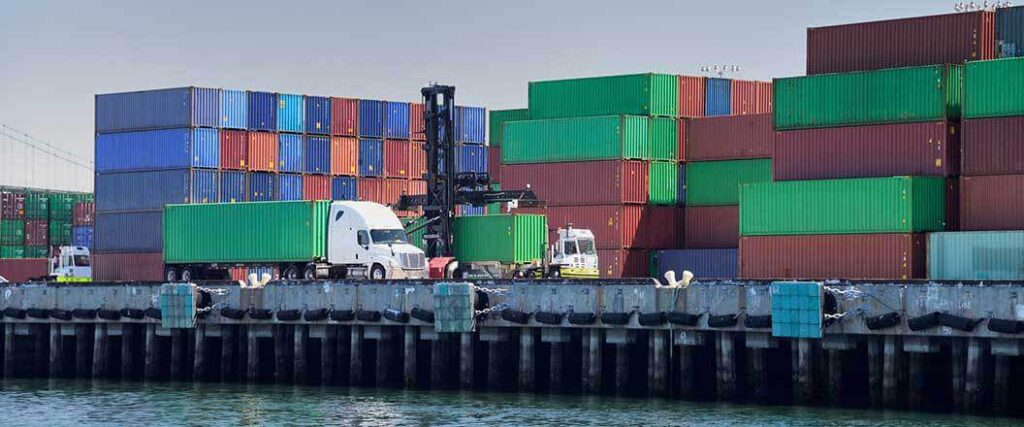
Drayage is a critical part of the transport shipping industry. Drayage began back in the early 20th century when horse-drawn wagons, then referred to as “dray,” were commonplace in cargo movement. These wagons were sideless carts that made for easy loading and unloading.
These horse-drawn transport carts moved goods from rail lines or close to a port terminal over short distances. Over time, the technology associated with drayage has evolved into a service today that is leaps and bounds more efficient and advanced.
Drayage is a crucial component of the supply chain process. The purpose of this service is to help alleviate port congestion and avoid any delays that can occur once the freight is unloaded from an ocean vessel. The service strictly focuses on short-haul loads in and out of ocean ports and terminals.
Source: FreightGuru
While the drayage service more commonly originates at a port of entry from ocean-bound vessels, it is not always the case. In many instances, drayage services originate from rail lines, storage yards, warehouses, or distribution facilities.
Drayage fills many gaps in the supply chain process, from intermodal hauling to transload shipping. In other words, drayage serves as a “connector piece” for different phases of transport shipping but connects them to ensure speed and efficiency in transport shipping.
The Importance of Drayage
Drayage services is not only a staple for the shipping industry but critically important when supply chain disruptions occur, like what the global market has been experiencing since 2019. At the moment, drayage is helping offset the stress and discombobulations that most significant ports and supply chains are experiencing.
So how exactly is drayage so critically important, you might ask? Well, let us put the math at the forefront of this question. There are ports all across the country that deal with imports and exports daily. The flood of freight containers going in and out of the ports is massive in scope and scale. The table below illustrates how much container freight pours through just one port in the United States annually.
Month Ending Port of Los Angeles Freight Container Statistics
| May | 2021 | 2022 |
| Imports | 535,714.20 | 499,960.15 |
| Exports | 109,886.00 | 125,655.50 |
Source: portoflosangeles.org
Annual Port of Los Angeles Freight Container Statistics
| Year | Imports | Exports | Prior Year Difference |
| 2018 - 2019 | 5,099,191.50 | 1,860,452.30 | 5.65% |
| 2019 - 2020 | 4,503,941.60 | 1,595,606.75 | -11.64% |
| 2020 - 2021 | 5,740,959.75 | 1,447,131.60 | 27.08% |
| 2021 - 2022 | 5,002,477.45 | 1,053,250.35 | -2.16% |
Source: portoflosangeles.org
The tables above illustrate how an exceptional amount of freight passes in and out of the Port of Los Angeles every month and year. This incredible statistic is where and why drayage comes into play. There is no way that much freight could sit on the docks until it just happens to get processed, loaded, or picked up.
Source: Forbes
Examples of drayage services are:
- Carrier drayage: One of the most common forms of drayage whereby transference of goods is done over short-haul from one transport type to another (Truck and Rail).
- Expedited drayage: The fastest form of drayage, often the primary choice for time-sensitive deliveries done over the road via truckload.
- Shuttle drayage: Whenever there is an overflow at a freight hub, freight is temporarily moved to an alternate location before moving onto the next leg of the transport journey.
- Pier drayage: Transported goods from a rail hub to a pier hub, utilizing roads to transport these goods.
- Door-to-door drayage: The direct transference of goods to retail over roads via truckload.
With drayage, the freight flow can easily and quickly move in and out of the ports, warehouses, and distribution facilities. This first and final mile solution utilizes short-haul trucking solutions.
Containers can be loaded onto truckload chassis and taken to a drayage location where the cargo is staged for the next phase of a logistical operation. This strategy clears up port congestion and buffers the flow of goods in and out of ports.
With the rise of eCommerce from online providers like Amazon and other online retailers, the demand for goods shipped via supply chains is at the highest demand they have ever been. This 50 billion dollar market shows no signs of slowing down, and drayage is the answer to keep the flow of goods moving.

Transload vs Drayage: Are They Interchangeable?
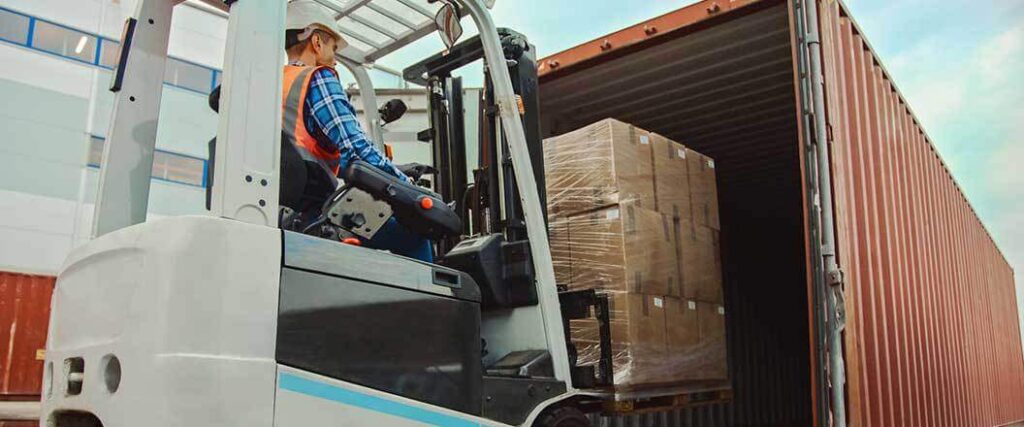
When looking at transloading and drayage, you may wonder if these services are interchangeable. For something to be interchangeable, they must be one and the same. The key takeaway here is the services themselves, as outlined below.
- Transload: This form of shipping deals with the shipment of goods through the use of multiple modes of transportation to the final destination. The cargo is often loaded and unloaded from containers into new ones or onto different equipment to help facilitate time and efficiency.
- Drayage: This form of freight transport revolves around short-haul transport. The purpose is to move cargo from a port, rail line, warehouse, or freight occurring at a facility. Then travel a short distance and staged for the next phase of travel.
As you can see, these two services are far from interchangeable. They both perform very different functions as it relates to a supply chain. With the ongoing international supply chain disruption, both of these services definitely have their place in alleviating the nuisances of the current dilemma plaguing the international supply chain, which is then transferred to domestic supply chains.
Both transload and drayage are seen as essential, and some would argue “normal” supply chain operation. These two services are mission-critical in terms of reducing the strain of the current supply chain disruption.
On top of reducing the strain of the current supply chain issues affecting businesses everywhere, these services have many practical applications that offer many benefits to their customers.
The Benefits of Transloading and Drayage Services
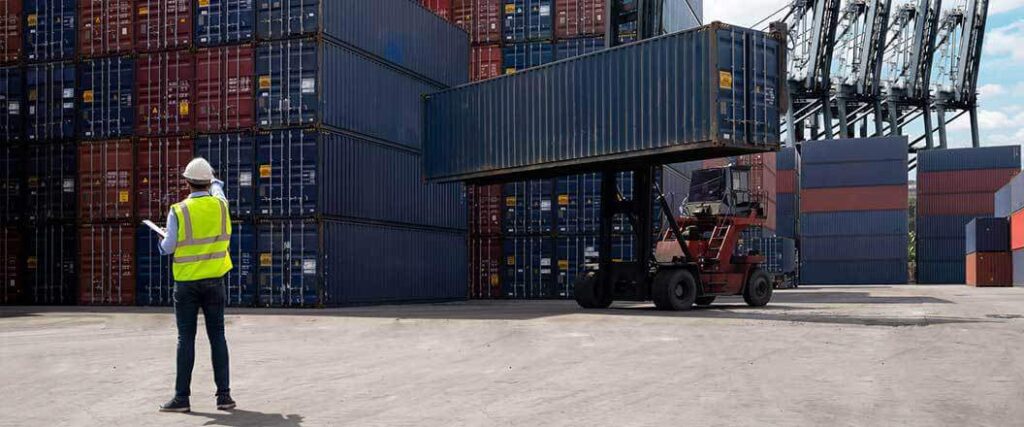
When shipping freight, palletized cargo, among other forms of goods, the benefits of transloading and drayage speak for themselves. Having the flexibility to utilize these services means that goods will have the fastest, most cost-effective, and efficient flow of any transport option available.
Transload services are a logistical method of shipping that is just too good to pass for any supply chain. The benefits are wide-ranging and are a stress-free solution for any business or supply chain currently in operation.
Here are some benefits of transloading services:
- Operational flexibility: With transloading, you gain the flexibility of utilizing multiple modes of transportation that favor your unique situation. The flexibility translates into direct efficiency in your operations. The benefit of this includes speed, safety, and efficiency through the use of transload facilities.
- Supply chain decentralization: By transloading, there are additional options for the supply chain to transport goods, regardless of terrain, climate, logistical challenges, etc. Without relying on individual modes of transport, the wide breadth of transloading strengthens any supply chain and keeps your goods flowing on time.
- Market growth: Transloading expands market reach through the direct use of multi-mode shipping, expanded partnerships, and logistical planning. When transloading, your business will certainly face new costs and operational planning. However, the benefits gained are exponential in terms of growing a business while meeting the expectations of your business in terms of schedules and costs.
- Cost-effectiveness: When using multiple modes of shipping, the prices can become quite competitive. The competitive nature of cost is not just tied to the fuel price but also the per ton to ship as it relates to fuel. For example, you can fit more tonnage on a single rail car than a truckload, and the cost per gallon related to the tonnage of the freight is insignificant when comparing a single rail car to a single dry van.
Getting goods in and out of ports and facilities quickly is a hallmark of drayage. Using drayage services greatly reduces the potential for added demurrage fees and other unnecessary fees. However, it does come with a caveat, and the drayage facility needs to be operating at normal to peak performance to get containers moved in and out while getting them unloaded and returned to the port in the case of port drayage.
Here are some benefits of drayage services:
- Time sensitivity: Having flexibility in the available transport systems will negate any potential delays in transporting goods. It uses dedicated short-haul over-the-road trucking that specifically targets speed sensitivity, accommodating customers who require speedy services on a fixed timetable.
- Safety and protection: There is an innate reduced risk for damage, theft, or any accidents due to reduced travel time. The use of dedicated transport for individual commodities or container types decreases potential hazards that can occur over the road.
- Accountability and sustainability: Drayage services utilize advanced tracking systems to account for your goods' transport, eliminating the need to monitor any transported freight physically. Management of shipping traffic that flows from any short-haul destination, such as ports and warehouses, is managed and tracked to facilitate fluid operations.
- Cost-effectiveness: Using short-haul transport saves not only time but money. As mentioned earlier, time equals money, and costs can rise if you take too much time at a pickup point such as a port. Fees can stack and add up fast; that is why using a drayage solution can completely negate that unfortunate reality. It’s all about managing time effectively with speed and accuracy and saving money.
Both transload and drayage offer clear benefits for any business or supply chain. The positives to gain are numerous and straightforward when moving products effectively while saving money. In the common era, as technology advances, these services will undoubtedly adapt and change. Because of this, everyone stands to benefit from these services and their evolution as time goes on.
When looking at the big picture, transloading can accommodate both large and small operations, freeing up resources related to warehousing and handling. Even introducing cross-docking services into the mix can be a potential home run regarding the commodities you are dealing with and the desired supply chain speed.
The business of trade can be summed up in three words, Time, money, and efficiency. These three words are essential to any successful business, and to be successful, you will need to deploy transport strategies and services for your product customizations daily. These strategies are required to keep yourself one step ahead of the competition while navigating any issue that may arise.

Transload Services USA is Ready to Facilitate Your Transload Needs
Don't get left in the dust when shipping goods anywhere in the country. Our industry experts can solve any logistical challenges your business or supply chain faces today. Our team can help facilitate any of your transload and drayage needs while keeping you on track for success.
Our full suite of services includes:
No matter the size or complexity of your business, Transload Services USA is here to help you get a solution to any problem with the help of our experienced team. Call Transload Services USA at (352) 282-4588 or click here to start transloading today!

